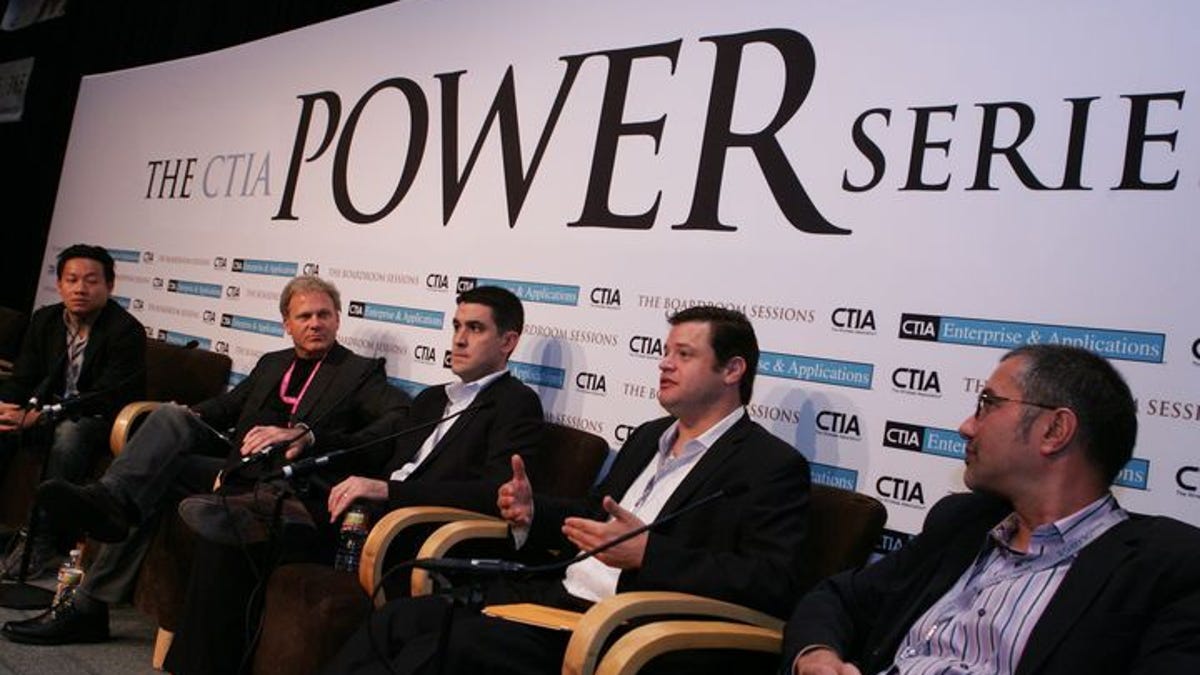How T-Mobile can help you find apps (Inside Apps)
T-Mobile believes it has a role in helping customers discover the right apps for them.

I've often used this column to talk about how developers can get their apps noticed, so it's appropriate that the issue of discoverability was a key topic at a recent panel that I moderated.
Discoverability, it turns out, is not just a dilemma for small developers but in the minds of wireless and media executives as well. They approach it in many different ways.
Brad Duea, senior vice president of value-added services for T-Mobile USA, said his company's research indicates consumers prefer apps that are preloaded by the carriers. Jim Eadie, senior vice president for digital business development for the Viacom Media Network, said his company develops a specific marketing plan for each app it launches. David Brinker, senior vice president of operations for iPad news app The Daily, said it ultimately comes down to quality and its ability to generate positive word of mouth.
The executives, along with Qualcomm's president of Internet services, Rob Chandhok, spoke on a panel last week during the CTIA Enterprise & Applications conference in San Diego. The topics ranged from the differences between developing for iOS and Android, as well as whether HTML 5 is ready for prime time.
Duea's comments are the most intriguing. They run counter to the common belief that carrier-loaded apps, affectionately referred to as "bloatware," aren't welcome. While a segment of early adopters may scoff at the idea of a company choosing the apps they should be using, Duea argued that the next wave of mass market smartphone adopters would not only mind preloaded apps, but actually welcome it.
"The three most important things in real estate are location, location, location," he said of the value of putting apps on the phone's home page.
Duea added T-Mobile was working on things to bring "apps to life" on the Internet, in app stores, and on the phone. Last week, T-Mobile launched a Web-based phone-calling app--which runs on both Android and the iPhone. It's one way to get on the iPhone without actually offering the device to its customers.
T-Mobile has been at the forefront of expanding the base of smartphone customers beyond early adopters. The carrier has aggressively lowered its price in a bid to slow the defection of its key contract subscribers, resulting in a customer-friendly low-end plan for $59.99 a month.
Whether the next wave of smartphone customers actually like carrier-loaded apps is still up for debate.
Related stories
• CTIA fall show fights for relevancy
• Why Microsoft missed a golden opportunity at CTIA
• Sprint CEO: Wireless industry can help our troubled economy
HTML 5 was another hot topic. As Chandhok told Inside Apps in a prior column, HTML 5 could go mainstream in the next 12 to 18 months. He reiterated that point during the panel discussion, defending the technology even as others on the panel said it still lacked some capabilities.
Brinker noted that The Daily actually uses some HTML 5 in parts of its iPad app, and considered using it entirely but felt it still fell short in some areas. The ultimate advantage of the format is The Daily could create the publication on HTML 5 and have it run on multiple platforms.
The discussion wrapped up with a summary of what each executive wanted to see in future apps. Chandhok said he sees more apps that take advantage of the smartphones that will be able to identify and communicate with nearby devices.
Eadie wants apps that can link the mobile device to the television. He envisions being able to watch a car commercial on television and using a tablet to get a longer interactive ad.
"Syncing ads is a big goal of ours," Eadie said.
Brinker hoped for more synchronization between apps and devices. He cited Evernote and Dropbox as examples of apps that do a good job of that now. In fact, the other executives all said they regularly use both apps.
"When we live in a day and age when every app is synchronized to every device, I will be thrilled," he said.

